Ocean Island, a small coral atoll in the Pacific Ocean, is home to a diverse array of bird species. Located halfway between Australia and Hawaii, this remote and secluded island boasts a unique ecosystem that provides a haven for many bird populations.
From the majestic frigatebirds and boobies to the lively parakeets and mynas, birds can be found in all corners of the island.
Due to the island’s isolation and lack of natural predators, many of these bird species have flourished and adapted to their surroundings over time, making Ocean Island a prime destination for birdwatchers and nature enthusiasts alike.
In this article, we will explore the fascinating world of birds on Ocean Island, their habitats, behaviors, and unique characteristics that make them so special.
1. Tropicbirds
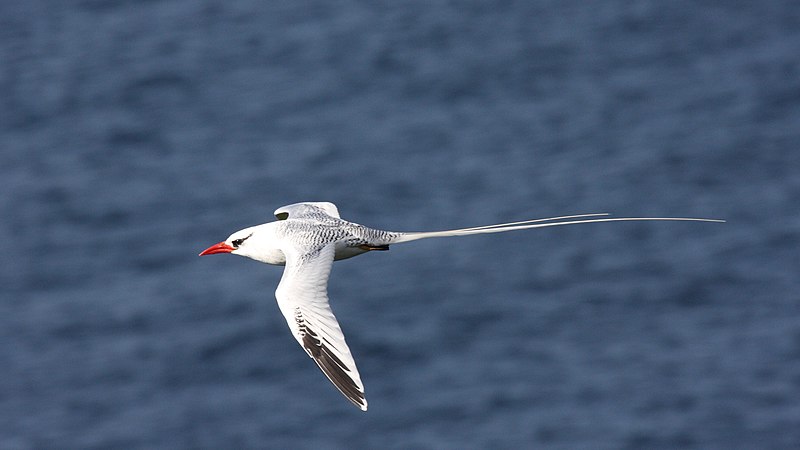
Tropicbirds are a unique family of birds, belonging to the order Phaethontiformes. They have long, white tail feathers and bright-colored beaks.
These features make them easily recognizable from other bird species.
Tropicbirds live in tropical seas throughout the world where they feed on fish and squid near coral reefs or ocean surface waters.
They breed mainly on remote islands with few predators, nesting their eggs in crevices or burrows dug into sandy soil by both parents for about five weeks until hatching takes place.
When not breeding tropicbirds can travel up to 10 000 km over several months before returning home again.
Their beauty is remarkable – so if you ever get a chance to see one of these magnificent birds flying gracefully above the sea then take it as an opportunity not to be missed.
Scientific classification:
| Kingdom | Animalia |
| Phylum | Chordata |
| Class | Aves |
| Clade | Eurypygimorphae |
| Order | Phaethontiformes Sharpe, 1891 |
Also Featured In: Most Common Birds in China, Guam Birds You Need to See
2. Petrels
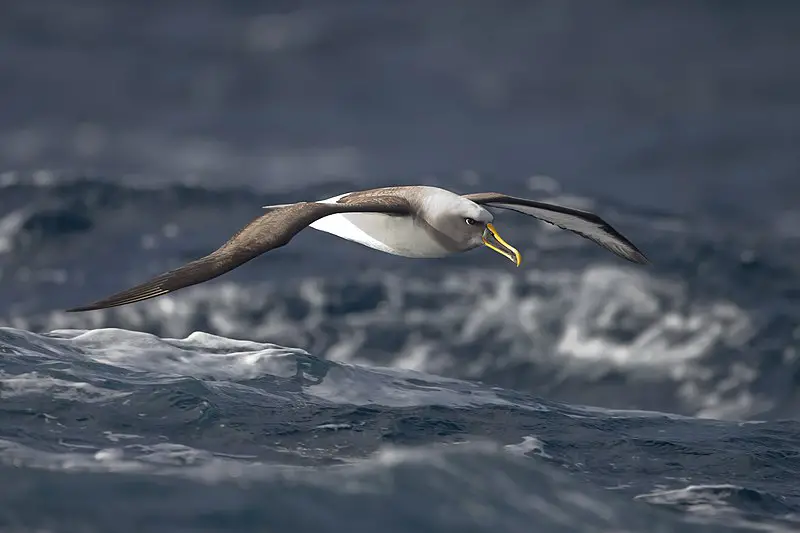
Petrels are seabirds that belong to the Procellariiformes order. They come from four families: albatrosses, petrels, and shearwaters, as well as two storm petrel families.
Commonly referred to collectively as ‘petrels’, these birds have a long history of being called Tubinares or tubenoses – referring to their distinctive beaks which feature small tubes on either side for them to detect food in dark seawater.
Petrels mainly consume fish, squid, and other small marine creatures, but they also feed off carrion when needed.
These waterbirds can fly great distances over open oceans in search of food with no land insight.
Scientific classification:
| Kingdom | Animalia |
| Phylum | Chordata |
| Class | Aves |
| Clade | Austrodyptornithes |
| Order | Procellariiformes Fürbringer, 1888 |
Also Featured In: Beautiful Brazilian Birds, Birds that Live in the Ocean
3. Northern Storm Petrels
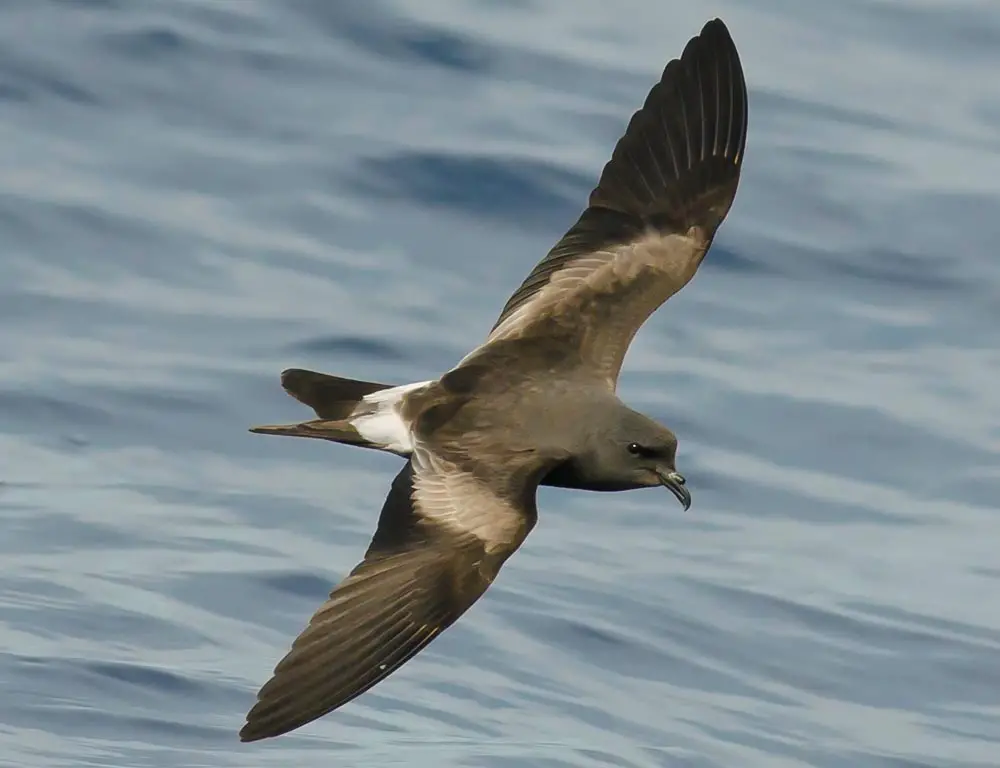
Northern storm petrels are one of the smallest seabirds, inhabiting oceans all over the world.
They have a unique ability to hover over water and pick planktonic crustaceans and small fish from the surface.
Northern storm petrels belong to the genus Hydrobates in the family Hydrobatidae, part of the Procellariiformes order.
This species was once lumped with austral storm petrel but recent studies show that they weren’t related closely which led to them being split into two distinct species now.
These birds can be identified by their dark grey upperparts and wings along with white underparts when seen from afar while feeding on the ocean’s surface.
Scientific classification:
| Kingdom | Animalia |
| Phylum | Chordata |
| Class | Aves |
| Order | Procellariiformes |
| Family | Hydrobatidae Mathews, 1912 |
| Genus | Hydrobates F. Boie, 1822 |
Also Featured In: Birds of Sweden, Lebanon Birds Live in Semi-Desert Areas
4. Sanderling
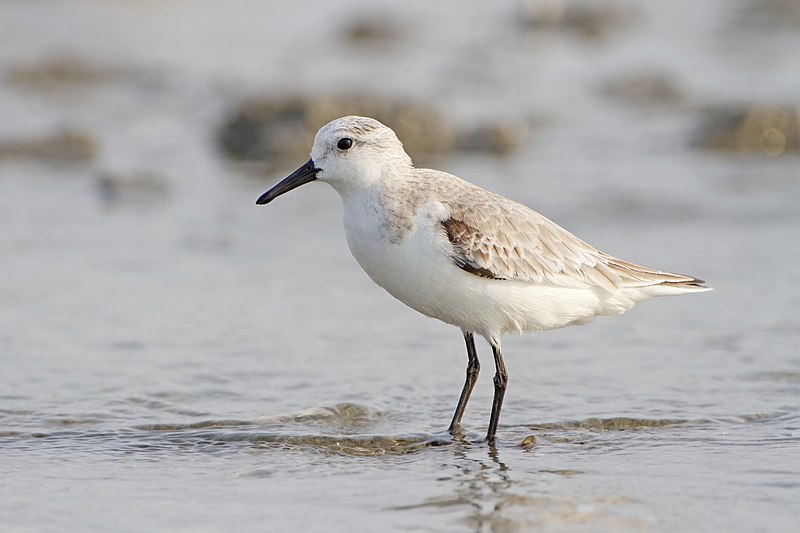
The Sanderling is a small wading bird that can be found in the Arctic region. Its name comes from Old English, meaning “sand-ploughman”. It has grey feathers and light legs which give it its distinct white coloration.
During summer breeding months, they are known to travel great distances – some wintering as far south as South America or Southern Africa. They typically feed on crustaceans such as shrimp and mollusks along coastal shores.
The Sanderling is an important species to watch out for because of its long migratory patterns and sensitivity to environmental change; if there’s trouble with this species then other birds may also be affected.
Scientific classification:
| Kingdom | Animalia |
| Phylum | Chordata |
| Class | Aves |
| Order | Charadriiformes |
| Family | Scolopacidae |
| Genus | Calidris |
| Species | C. alba |
Also Featured In: Top Birds Found in Mexico, Galapagos Birds You Should Know
5. Sulids
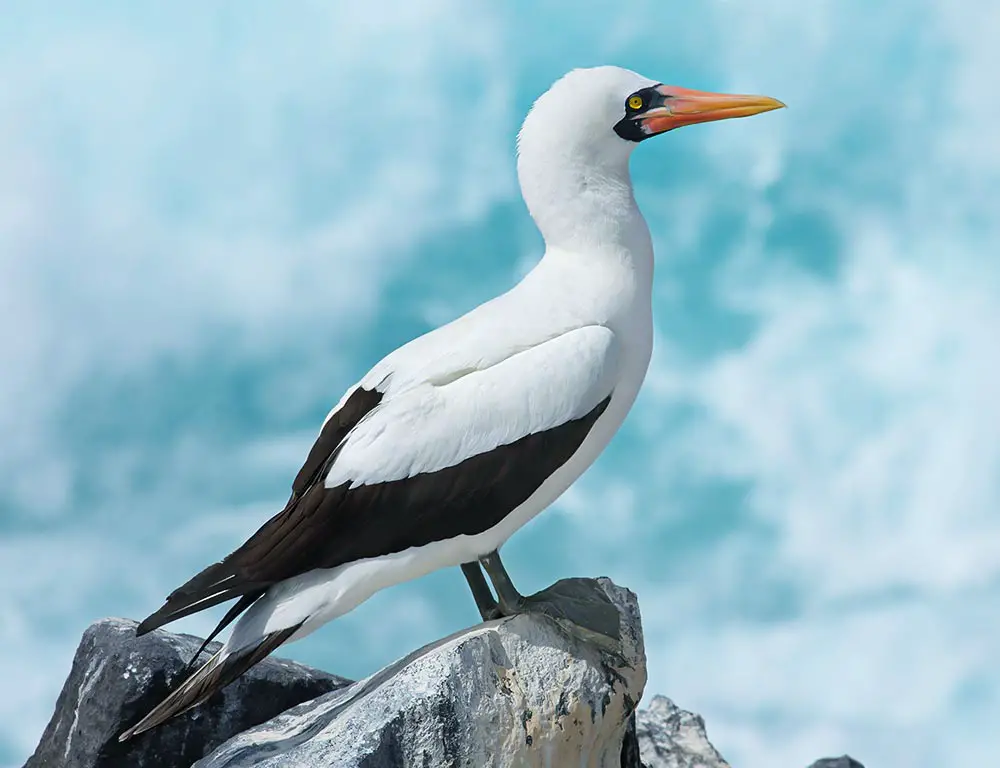
Sulids are a medium-large family of coastal seabirds that includes both gannets and boobies. They hunt by diving into the water to catch their prey, such as fish, squid, or crustaceans.
These birds have long wings which they use to soar gracefully while searching for food. Sulids also possess webbed feet and strong beaks designed for snatching up prey from below the surface of the sea.
Members of this family vary in size; some species can grow over 3ft tall with a wingspan reaching 5 ft. The 10 different species all belong either to Sula (boobies) or Morus (gannets).
It’s easy to tell them apart due to differences in coloration, behavior, and DNA sequences between each type.
In summary, sulids are impressive hunters who plunge dive after food at sea but still manage to remain graceful aviators despite their large size.
Scientific classification:
| Kingdom | Animalia |
| Phylum | Chordata |
| Class | Aves |
| Order | Suliformes |
| Family | Sulidae Reichenbach, 1849 |
Also Featured In: Egyptian Birds, Common Denmark Birds
6. Cormorants
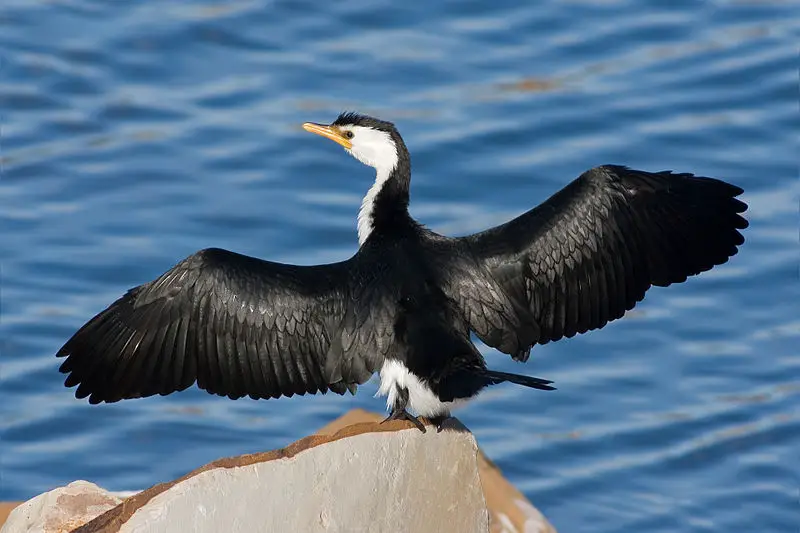
Cormorants are a family of aquatic birds found around the world. They include 40 species, such as great cormorants and common shags.
In Britain, these two species are the most commonly seen in their natural habitats.
Cormorants have long necks, and webbed feet and can be identified by their glossy black feathers which they use to help them swim through water with ease as they hunt for food like fish or crustaceans.
They have an impressive wingspan often reaching up to five feet across when fully extended.
Despite being strong swimmers, these birds also enjoy spending time perched on rocks near rivers or shorelines where they will preen themselves to keep clean and dry during cooler weather conditions.
Scientific classification:
| Kingdom | Animalia |
| Phylum | Chordata |
| Class | Aves |
| Order | Suliformes |
| Family | Phalacrocoracidae Reichenbach, 1850 |
Also Featured In: Most common Birds in France, Turkey Birds You Should Know
7. Procellariidae
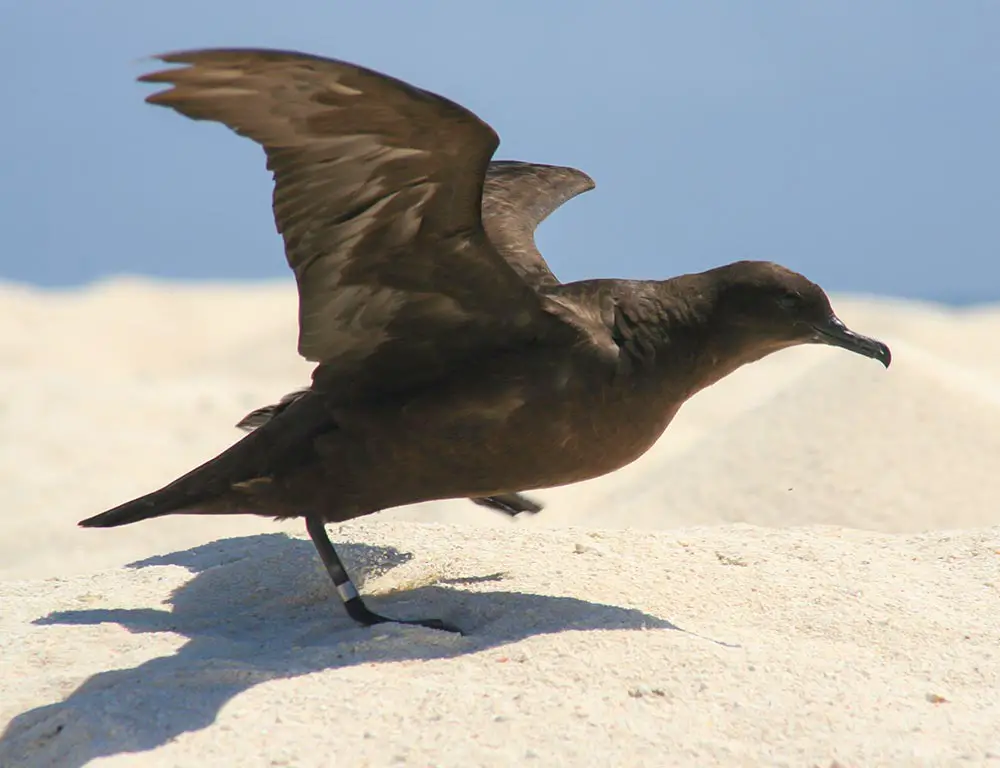
Procellariidae is a diverse family of seabirds belonging to the bird order Procellariiformes.
These birds are commonly referred to as tubenoses and include fulmarine petrels, gadfly petrels, diving petrels, prions, and shearwaters.
They range in size from the small storm petrel which measures around 18cm long to the giant albatross which can reach up to 3 meters in length.
Generally found near oceans or coasts where they feed on fish as well as squid and other marine life depending on species.
Many procellariids will also nest inland during the breeding season before returning out to sea for most of their lives.
Their wings have specially adapted feathers that give them incredible gliding abilities allowing them to fly with minimal effort over vast distances across oceanic regions.
Scientific classification:
| Kingdom | Animalia |
| Phylum | Chordata |
| Class | Aves |
| Order | Procellariiformes |
| Family | Procellariidae Leach, 1820 |
Also Featured In: Most Common Romanian Birds, Bulgarian Birds
8. Skuas
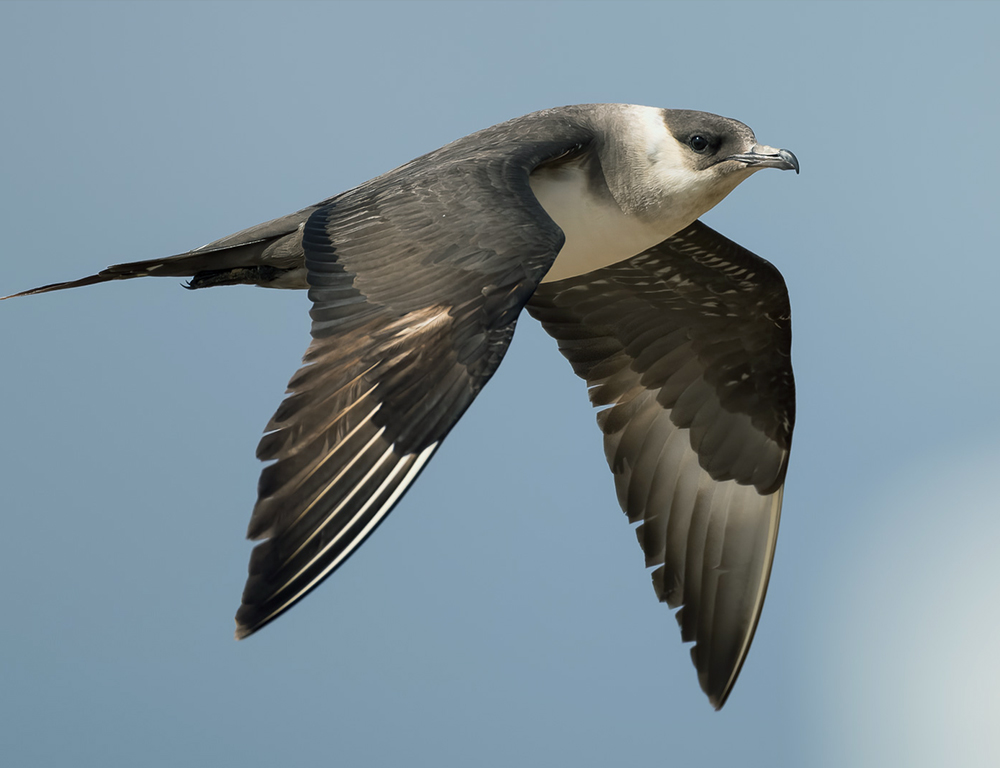
Skuas are a group of predatory seabirds with seven species, all belonging to the genus Stercorarius.
They are also known as “Jaegers” in North America and their name originates from the Faroese word for Great Skua – skúgvur.
These birds typically inhabit coastal areas or open oceans where they feed on fish, krill, and other marine creatures.
Skuas can be distinguished by their pointed wings which help them fly long distances while hunting food.
Their distinctive coloration varies depending on age and habitat but generally includes greyish brown upperparts and white underparts with black streaks along its belly area.
The overall size ranges from 24-40 cm making these one of the larger sea bird species.
Scientific classification:
| Kingdom | Animalia |
| Phylum | Chordata |
| Class | Aves |
| Order | Charadriiformes |
| Suborder | Lari |
| Family | Stercorariidae Gray, 1871 |
| Genus | Stercorarius Brisson, 1760 |
Also Featured In: Birds of Morocco, Italian Birds You Should Know
9. Frigatebird
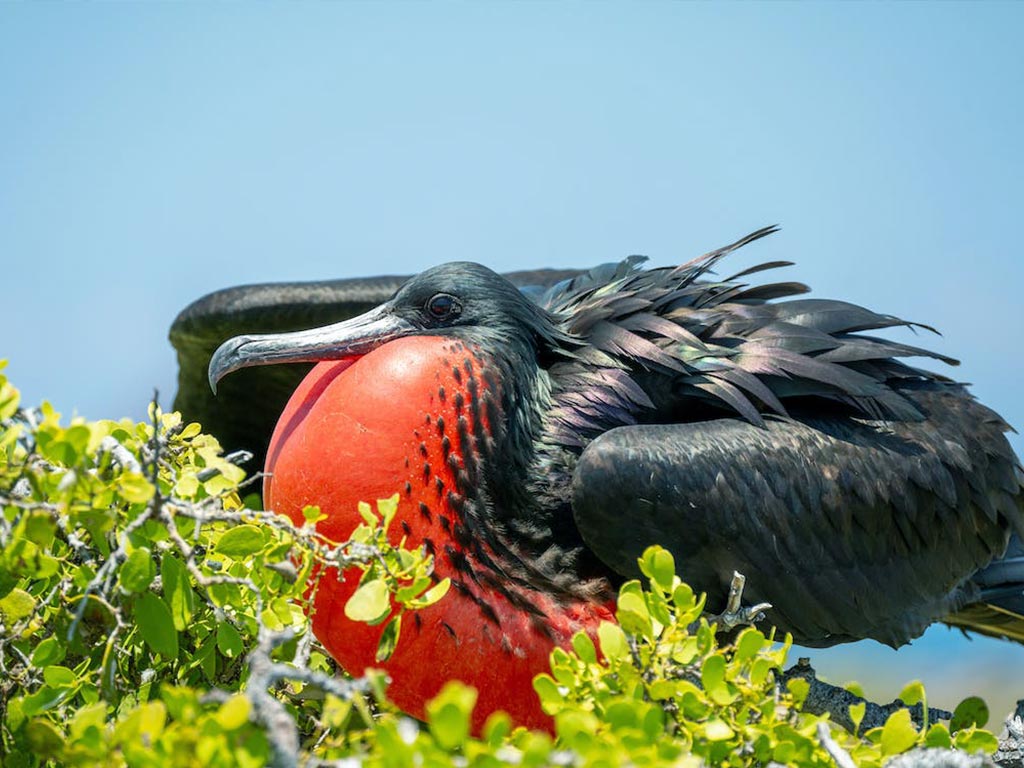
Frigatebirds are a beautiful and mysterious family of seabirds, found in all tropical and subtropical oceans. The five extant species have glossy black plumage, long forked tails, and lengthy hooked bills.
During the breeding season, males display a bright red gular pouch which they inflate to attract mates. Females have white underbellies year-round giving them an elegant contrast against their darker feathers.
They spend most of their lives soaring with minimal effort over warm ocean waters seeking food such as fish or squid taken from the surface or plucked out of midair by other birds.
Frigatebirds often nest on isolated islands due to a lack of predators yet still manage to travel incredibly large distances between feeding grounds every day making them truly remarkable creatures.
Scientific classification:
| Kingdom | Animalia |
| Phylum | Chordata |
| Class | Aves |
| Order | Suliformes |
| Family | Fregatidae Degland & Gerbe, 1867 |
| Genus | Fregata Lacépède, 1799 |
Also Featured In: Birds of Ecuador, Birds You’ll Find in the Marshall Islands
10. Albatrosses
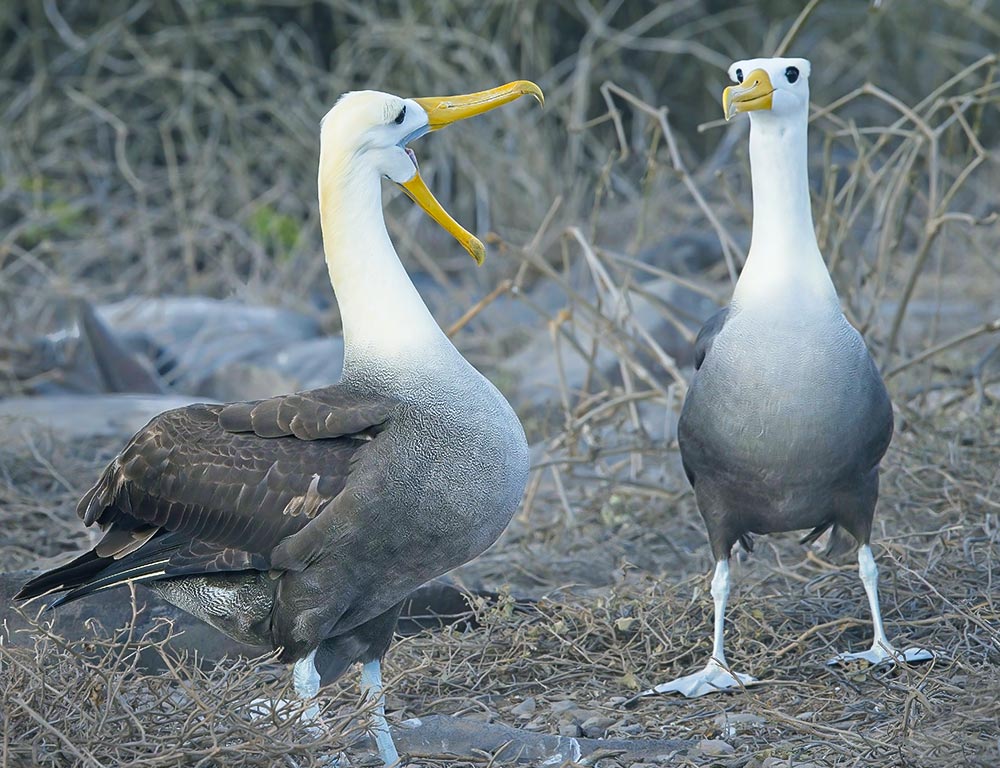
Albatrosses are majestic, large seabirds belonging to the Diomedeidae family in the Procellariiformes order.
These birds have impressive wingspan and can fly great distances over oceans with minimal effort.
They inhabit all of the world’s southern oceans, ranging from Antarctica up through New Zealand and Australia as well as parts of the northern Pacific Ocean region.
Albatross populations were once abundant throughout much of their range but they now face threats such as longline fishing gear entanglement which has caused a significant decline in numbers in some areas.
Furthermore, occasional vagrants have been found outside their native ranges including fossil remains suggesting that albatrosses previously existed in other regions too.
Scientific classification:
| Kingdom | Animalia |
| Phylum | Chordata |
| Class | Aves |
| Order | Procellariiformes |
| Family | Diomedeidae G.R. Gray 1840[1] |
Also Featured In: New Zealand Birds, Birds that Can Survive in the Storm
11. Masked Booby
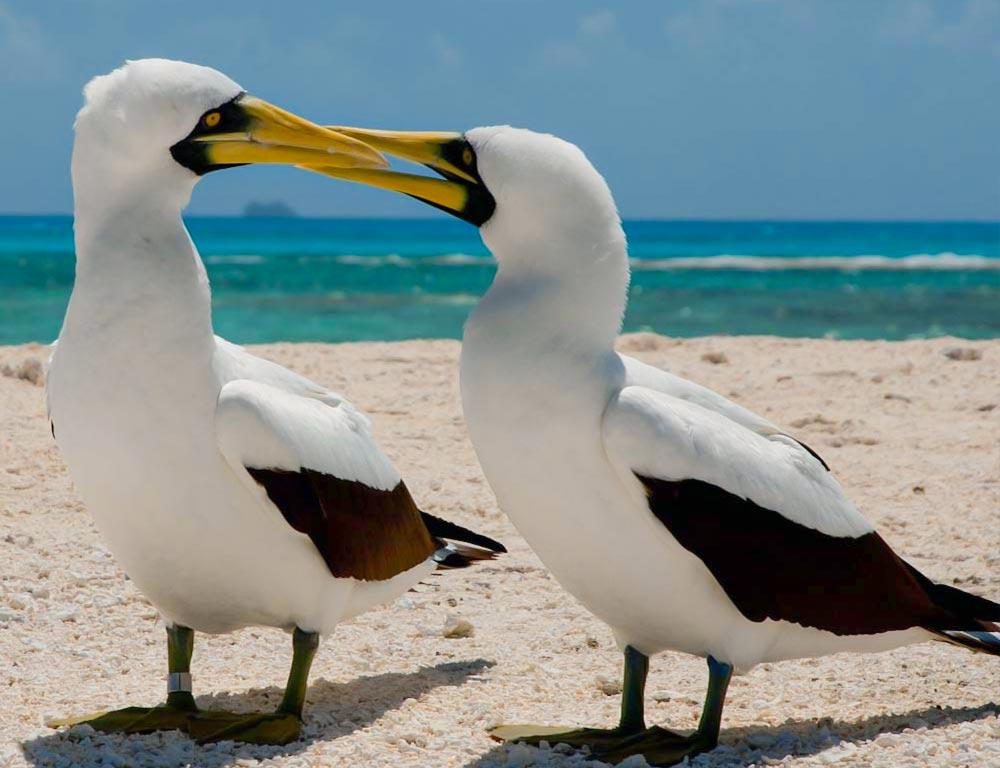
The Masked Booby is a large seabird belonging to the booby and gannet family. It was first described by French naturalist René-Primevère Lesson in 1831, making it one of six species of boobies within its genus Sula.
It has an impressive aerodynamic body shape with pale grey or white plumage on its head and neck, while the rest of its body is blackish brown.
Its wingspan can reach up to 1 meter wide. The bill is yellowish and pointed at the end, whilst they have bright blue skin around their eyes – this is why they are also known as ‘blue-faced’ boobies.
They use their strong wings to soar over oceans in search of fish which makes them excellent fishers who feed mainly on flying fish near tropical waters but can occasionally be found off coasts in temperate regions too.
Scientific classification:
| Kingdom | Animalia |
| Phylum | Chordata |
| Class | Aves |
| Order | Suliformes |
| Family | Sulidae |
| Genus | Sula |
| Species | S. dactylatra |
Also Featured In: Mauritius birds, Caribbean Birds
12. Atlantic Petrel
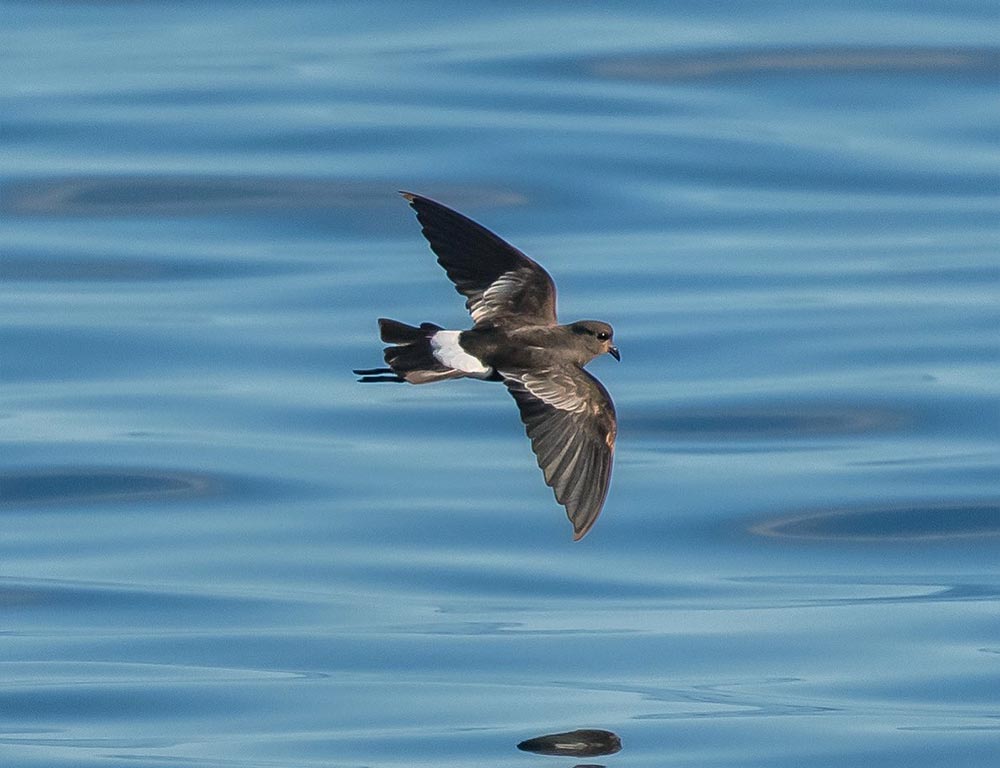
The Atlantic petrel is a large and stocky dark-colored seabird that can be found in the South Atlantic Ocean. It breeds in huge colonies on Tristan da Cunha and Gough Island, ranging from Brazil to Namibia at sea.
Most records of these birds exist to the west of their breeding islands along the subtropical convergence line.
Standing about 43 cm high, they are powerful flyers with white bellies and black wings tipped with white spots; underwings have an “M” pattern when viewed from above while flying overhead.
They prefer offshore waters over open ocean but will occasionally come to shore for rest or food during migration times as well as nesting season when it arrives.Scientific classification:
| Kingdom | Animalia |
| Phylum | Chordata |
| Class | Aves |
| Order | Procellariiformes |
| Family | Procellariidae |
| Genus | Pterodroma |
| Species | P. incerta |
Also Featured In: Cabo Verde birds, Gough Island Birds You Should Know
13. Sooty Tern
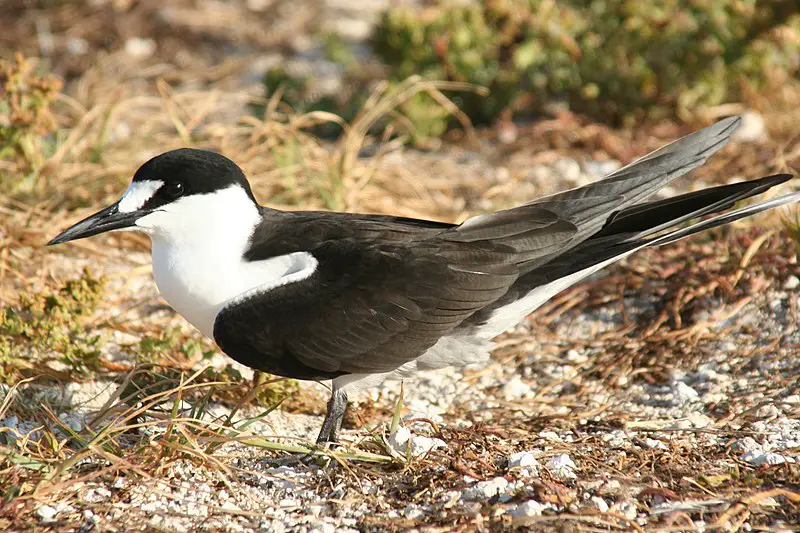
The Sooty Tern is a bird that lives in the tropics of all three major oceans. It is found mostly on remote islands where it returns to nest and breed during its seasonal journeys.
This member of the Laridae family has been described by Carl Linnaeus as Sterna fuscata, though more recently it was given its current name Onychoprion fuscatus.
The sooty tern has dark grey wings and back, with white underneath for camouflage against predators when flying over open ocean waters; they are also adept at diving underwater in search of food such as fish or crustaceans which make up their diet.
They live in colonies and usually lay two eggs each year which incubate for about four weeks before hatching into fluffy little chicks.
Scientific classification:
| Kingdom | Animalia |
| Phylum | Chordata |
| Class | Aves |
| Order | Charadriiformes |
| Family | Laridae |
| Genus | Onychoprion |
| Species | O. fuscatus |
Also Featured In: Maldives birds, Birds That Live in Ascension Island
14. Least Tern
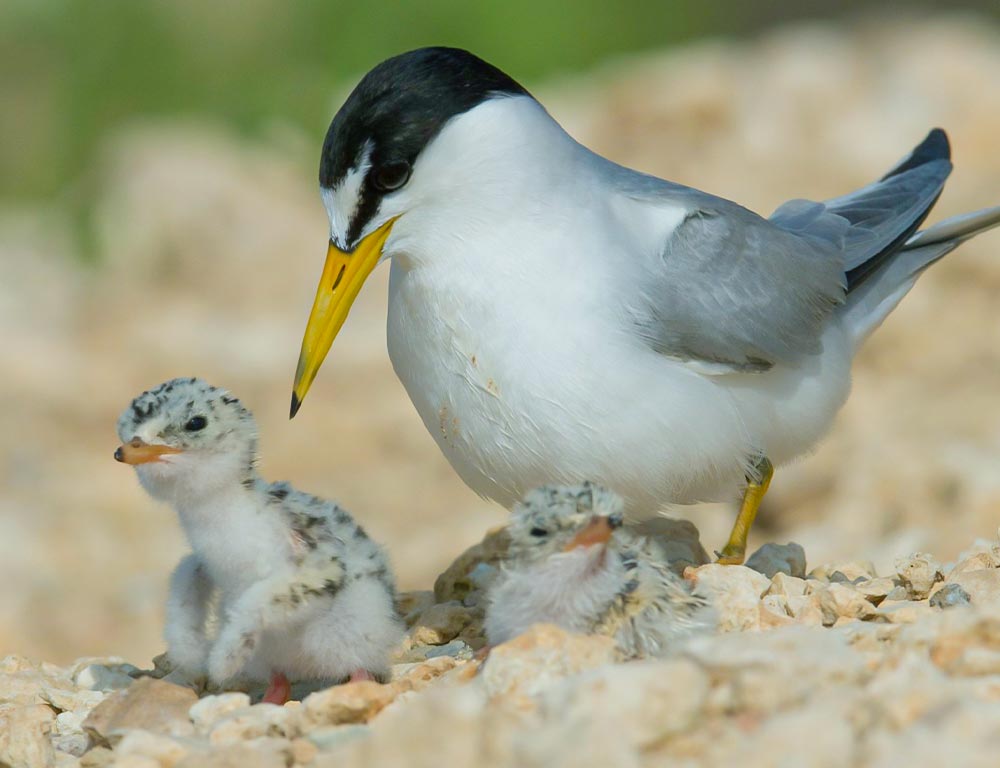
The Least Tern is a species of tern native to North America and northern South America. It has many close relatives, such as the yellow-billed tern and Peruvian tern from South America, or the little tern from the Old World.
The bird measures 8.7 – 9.4 inches in length with a wingspan of 16–18 inches across, making it an intermediate size between most other species of birds within its family groupings.
Its feathers are usually gray on top with white underneath and typically have darker accents near their heads along with bright red bills for feeding during summer months when they mate upon beaches found throughout these regions mentioned above.
They feed mainly on small fish that live at shallow depths near shorelines where they also nest nearby due to migratory patterns which take place annually each year.
Hence why this particular bird does not travel far distances away from areas known as home for them over long periods like some other types do.
Scientific classification:
| Kingdom | Animalia |
| Phylum | Chordata |
| Class | Aves |
| Order | Charadriiformes |
| Family | Laridae |
| Genus | Sternula |
| Species | S. antillarum |
Also Featured In: Aruba birds, Most Common Birds in South America Birds
15. Tristan Thrush
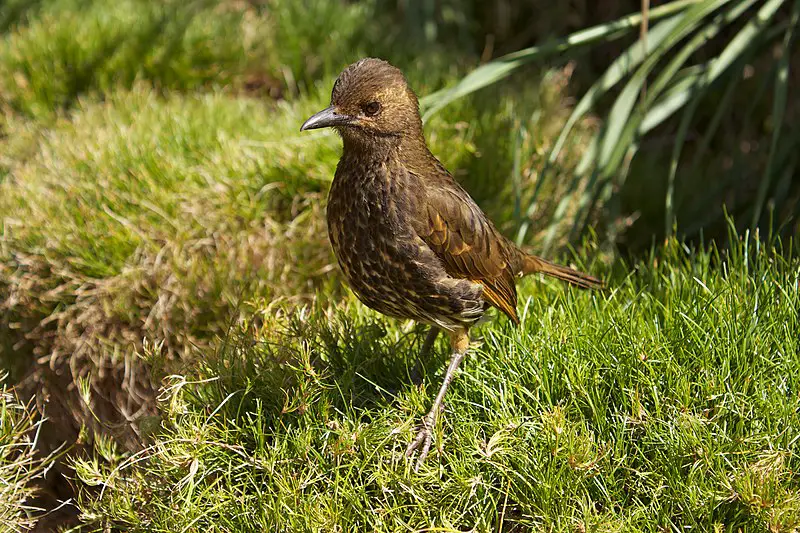
The Tristan thrush is a unique species of bird, endemic to the remote archipelago of Tristan da Cunha in the South Atlantic Ocean.
It was first described by John Gould as being similar in size and appearance to the song Thrush, with Henry Moseley noting its very dark coloration.
Its plumage is brown-black or ash-grey, featuring white spots on its wings and tail feathers which can be seen when it flies.
The Thrush feeds mainly on insects but also eats small fruits and berries from shrubs found around the islands.
This species has adapted well to living among humans due to their friendly nature; they often forage near human settlements looking for food scraps or handouts.
Although these birds are not threatened at present, their population numbers remain relatively low due to habitat destruction caused by invasive plant species introduced by sailors over time impacting this beautiful island bird’s home range.
Scientific classification:
| Kingdom | Animalia |
| Phylum | Chordata |
| Class | Aves |
| Order | Passeriformes |
| Family | Turdidae |
| Genus | Turdus |
| Species | T. eremita |
Also Featured In: Thrush Species, Birds That Live In Tristan da Cunha
16. Sternidae
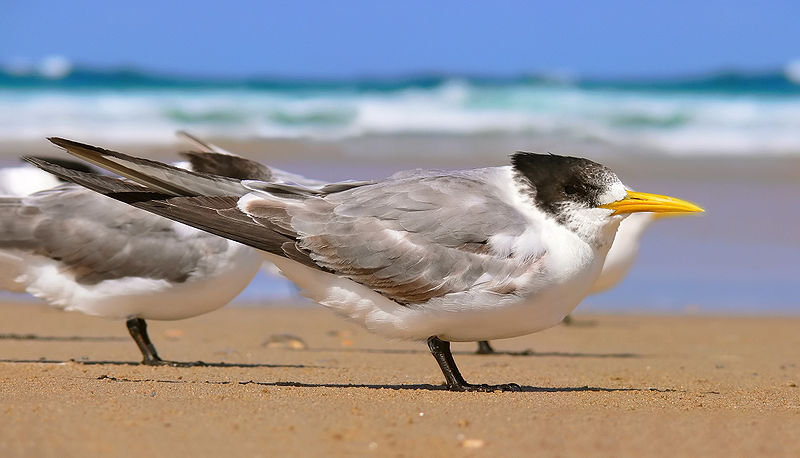
Sternidae are a subgroup of the family Laridae, consisting of eleven genera. They have slender bodies with long forked tails and narrow wings. Their bills are long and their legs relatively short.
Most species display pale grey or white plumage above, while underneath they show black markings on the head along with varying shades of browns elsewhere on their body.
These seabirds can be found in coastal areas near oceans, rivers, and wetlands worldwide but especially in North America where they feed primarily on small fish which they capture by swooping down from the air to snatch them up from below the surface.
They also supplement this diet with crustaceans such as crabs when available.
Scientific classification:
| Kingdom | Animalia |
| Phylum | Chordata |
| Class | Aves |
| Order | Charadriiformes |
| Family | Laridae |
| Subfamily | Sterninae Bonaparte, 1838 |
Also Featured In: Florida Birds, Birds You’ll Find in the Sea
17. Puffins
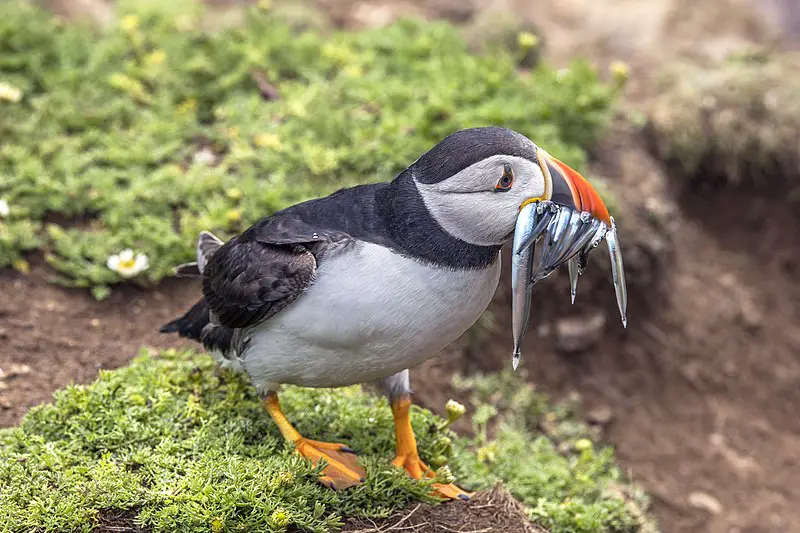
Puffins are small seabirds that belong to the bird genus Fratercula. They primarily feed by diving into the water and breed in colonies on coastal cliffs or offshore islands.
They can nest in crevices among rocks or in burrows in the soil. There are three species of puffins, with two found in the North Pacific Ocean and one in the Atlantic Ocean.
The tufted puffin and horned puffin are North Pacific species, while the Atlantic puffin is the only puffin species found in the Atlantic Ocean.
These birds have colorful beaks that are often compared to clowns’ faces, making them a popular sight among birdwatchers.
Puffins are fascinating creatures that have long been the subject of fascination and study among the scientific community.
Scientific classification:
| Kingdom | Animalia |
| Phylum | Chordata |
| Class | Aves |
| Order | Charadriiformes |
| Family | Alcidae |
| Tribe | Fraterculini |
| Genus | Fratercula Brisson, 1760 |
Also Featured In: Famous Paintings Birds, Most Common Nature Birds
18. Brown Pelican
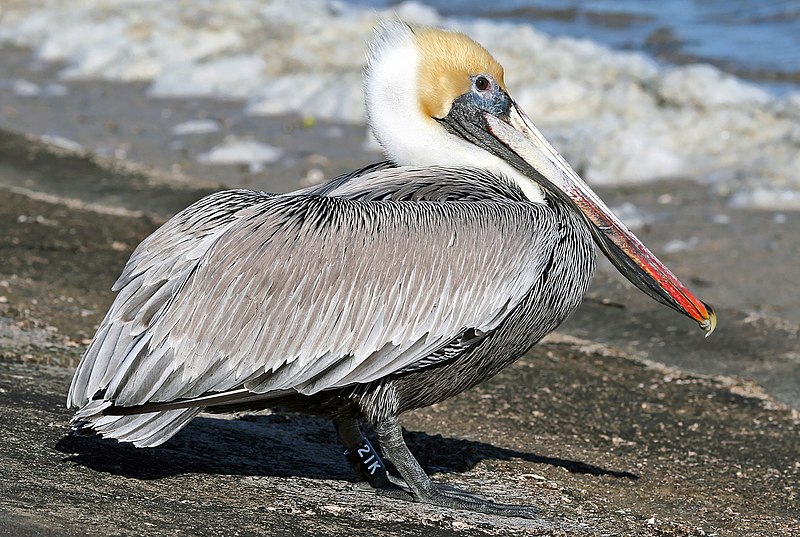
The majestic brown pelican is a dive-feeding bird that belongs to the pelican family. It is one of the three pelican species found in the Americas and is known to dive into water to catch its prey.
From the Atlantic Coast of New Jersey to the mouth of the Amazon River, and along the Pacific Coast from British Columbia to northern Chile, including the Galapagos Islands, this bird can be found.
Its scientific name is Pelecanus occidentalis, and it has a colored brown plumage, which is its distinct characteristic.
The brown pelican belongs to the largest bird species that exists today, with a wingspan that can stretch up to seven feet long.
This bird helps maintain a balance in the ecosystem by eating smaller fish, crustaceans, and other aquatic prey.
Scientific classification:
| Kingdom | Animalia |
| Phylum | Chordata |
| Class | Aves |
| Order | Pelecaniformes |
| Family | Pelecanidae |
| Genus | Pelecanus |
| Species | P. occidentalis |
Also Featured In: Water Birds Live around Us, Flight Birds You Should Know
19. Plover
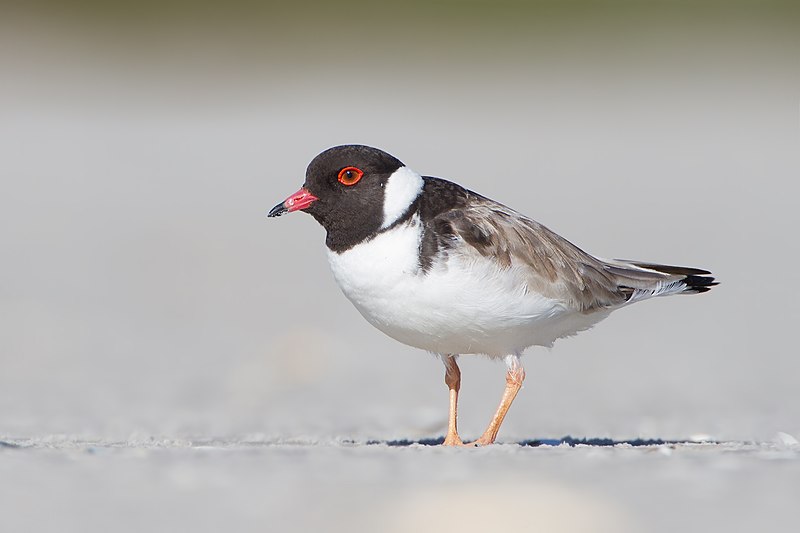
Plovers are a diverse group of wading birds, encompassing approximately 66 different species. They belong to the subfamily Charadriinae and are found in various regions of the world (excluding the Sahara).
Plovers are often referred to as “dotterel” and are closely related to lapwings, which consist of around 20 species.
These birds are known for their distinctive behavior patterns, including running instead of flying when threatened, and their unique breeding habits, such as nesting on beaches and exposed grasslands.
Plovers are considered a symbol of love and devotion in some cultures and have been featured in various mythological stories throughout history.
With their striking appearance and intriguing characteristics, plovers are a fascinating group of birds that continue to captivate researchers and enthusiasts alike.
Scientific classification:
| Kingdom | Animalia |
| Phylum | Chordata |
| Class | Aves |
| Order | Charadriiformes |
| Family | Charadriidae |
| Subfamily | Charadriinae Leach, 1820 |
Also Featured In: Flocks Birds around Us, Birds that Live in Tamil Nadu
20. Tropicbirds
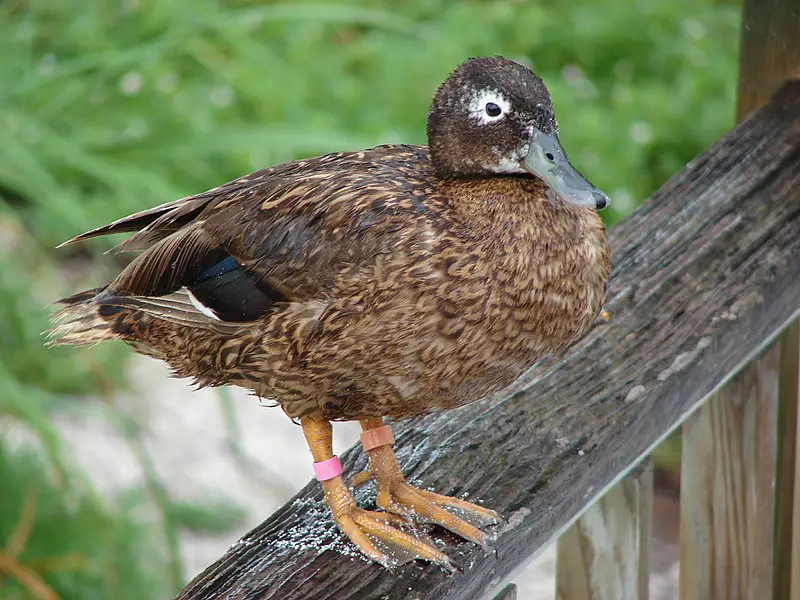
Tropicbirds are a group of tropical seabirds with three species found worldwide. They have long, slender tails and white bodies with black markings. Their bills are thin and pointed, ideal for catching fish and squid.
Tropicbirds are known for their elaborate courtship displays that involve aerial acrobatics and gift-giving. They nest on cliffs or in trees and lay a single egg per breeding season.
Tropicbirds can be found in a variety of oceanic habitats, including coral reefs, open oceans, and subtropical zones.
They are threatened by habitat destruction, overfishing, and climate change. Tropicbirds are important indicators of marine ecosystem health and serve as an important component of oceanic biodiversity.
To Recap
The world’s ocean islands are home to a remarkable diversity of bird species that often go unnoticed by the general public.
From the colorful and charismatic to the elusive and unique, these birds play vital roles in their ecosystems and offer fascinating insights into the wonders of our natural world.
By learning more about these lesser-known island inhabitants, we can better appreciate the intricacies of biodiversity and the importance of conservation efforts to protect these incredible avian species for future generations to enjoy and study.